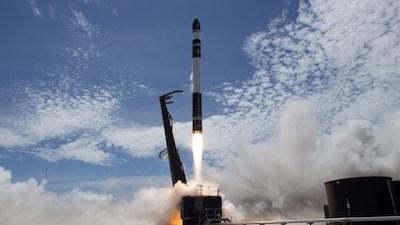Thu, Apr 05, 2018
Launch Window To Be Open For 14 Days
US orbital launch provider Rocket Lab has confirmed it will open a 14-day launch window this month to conduct the company’s first fully commercial launch. The mission, named ‘It’s Business Time’, includes manifested payloads for Spire Global and GeoOptics Inc., built by Tyvak Nano-Satellite Systems.

The 14-day ‘It’s Business Time’ launch window will open on Friday April 20, 2018 NZT. During this time a four-hour launch window will open daily from 12:30 p.m. NZT (00:30 UTC). ‘It’s Business Time’ will launch from Rocket Lab Launch Complex 1 in New Zealand. Licensed to launch every 72 hours, Rocket Lab Launch Complex 1 is the world’s only private orbital launch facility.
Rocket Lab is the only private, dedicated small launch provider globally that has deployed satellites to orbit. ‘It’s Business Time’ marks the fastest transition a private launch provider has made from test program to fully commercial flights. This mission follows just three months after Rocket Lab’s January 21, 2018 launch “Still Testing”, which successfully deployed an Earth-imaging satellite for Planet and circularized the orbit of two weather and AIS ship tracking satellites for Spire Global using Rocket Lab’s in-house designed and built kick stage.
“‘It’s Business Time’ represents the shift to responsive space. We always set out to create a vehicle and launch site that could offer the world’s most frequent launch capability and we’re achieving that in record time,” said Rocket Lab founder and CEO Peter Beck.
“Rocket Lab is the only small launch provider that has reached orbit and delivered on promises to open access to space for small satellites. We can have payloads on orbit every 72 hours and our rapidly expanding manifest shows this is frequency is critical for the small satellite market,” he added.
Rocket Lab can achieve an unprecedented launch frequency thanks to a vertically integrated vehicle manufacturing process that enables Rocket Lab to roll an Electron vehicle off the production line every week. To meet a burgeoning 2018/19 launch manifest, Rocket Lab has rapidly scaled production of the Electron launch vehicle across its three-acre headquarters and production facility in Huntington Beach, California. The company will produce 100 3D printed Rutherford engines this year to support a monthly launch cadence by the end of 2018.
(Image provided with Rocket Lab news release)
More News
Aero Linx: Model Aeronautical Association of Australia MAAA clubs are about fun flying, camaraderie and community. For over 75 years, the MAAA has been Australia’s largest fl>[...]
Touchdown Zone Lighting Two rows of transverse light bars located symmetrically about the runway centerline normally at 100 foot intervals. The basic system extends 3,000 feet alon>[...]
“Discovery and innovation are central to our mission at Virgin Galactic. We’re excited to build on our successful record of facilitating scientific experiments in subor>[...]
How To Get A Story On Aero-TV News/Feature Programming How do I submit a story idea or lead to Aero-TV? If you would like to submit a story idea or lead, please contact Jim Campbel>[...]
Student Pilot Reported That During Rotation, “All Of A Sudden The Back Of The Plane Kicked To The Right..." Analysis: The student pilot reported that during rotation, “>[...]
 ANN's Daily Aero-Linx (05.02.24)
ANN's Daily Aero-Linx (05.02.24) ANN's Daily Aero-Term (05.02.24): Touchdown Zone Lighting
ANN's Daily Aero-Term (05.02.24): Touchdown Zone Lighting Aero-News: Quote of the Day (05.02.24)
Aero-News: Quote of the Day (05.02.24) ANN FAQ: Contributing To Aero-TV
ANN FAQ: Contributing To Aero-TV NTSB Final Report: Cirrus Design Corp SR20
NTSB Final Report: Cirrus Design Corp SR20



